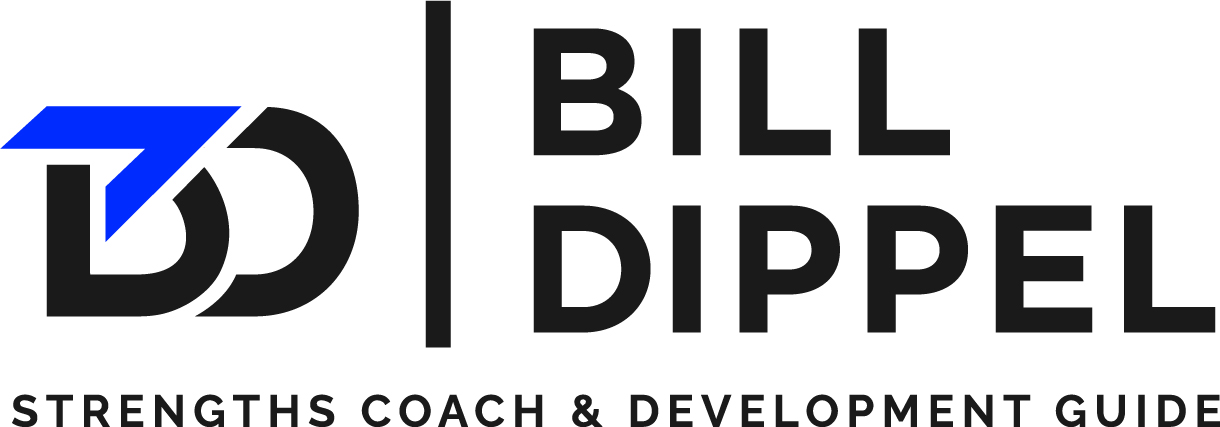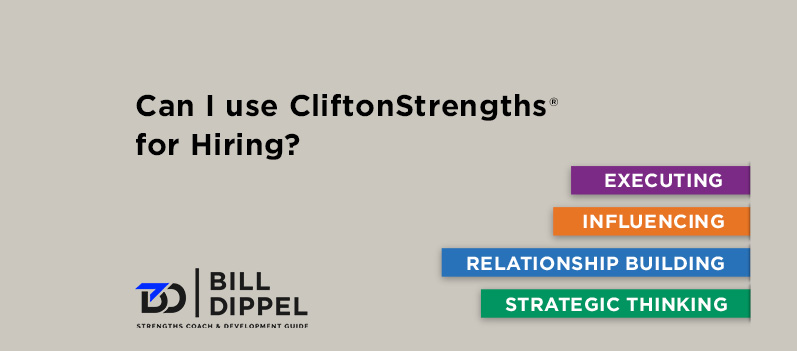Should You Hire Using CliftonStrengths? The Answer May Astound You!
When people ask questions about how to hire the right person, they often expect me to suggest using the CliftonStrengths assessment to spot a good candidate at an interview.
As a Gallup Certified Strengths Coach, I am a proponent of using the Gallup CliftonStrengths assessment to evaluate employees and teams. However, I advise against requesting job seekers to take this survey during the recruiting process because the information it offers isn’t what you need to evaluate a job candidate’s fit with the desired role or organization during recruitment.
Surprised? People often are!
In this blog post, you’ll learn about the limitations of relying solely on the CliftonStrengths assessment to understand a candidate’s true abilities and effective alternatives.
“CliftonStrengths assessment is meant to give a broad picture of someone’s talents. Labeling an interview candidate with those themes before understanding how they apply them could be misleading for hiring managers.”
 CliftonStrengths is Meant to Develop Talents
CliftonStrengths is Meant to Develop Talents
The main difficulty in using CliftonStrengths to find the right candidate for a job is that it doesn’t reflect a person’s accomplishments or experience—only they can do that.
Practically speaking, asking a job candidate to complete a 177 statement preference assessment during the hiring process may also create an off-putting experience. Or they could tailor their responses to the job description, yielding inaccurate results.
CliftonStrengths assessment is meant to give a broad picture of someone’s talents. As a team or manager, you will want to develop those talents into strengths for the company or organization. The assessment gives people broad themes they can use to understand themselves and works best in a setting that promises career development rather than job acquisition, such as during onboarding.
Avoid Labeling People From The Outset
The CliftonStrengths assessment themes work best in context. When reviewing themselves, people can use themes like Learner, Developer, Focus, Maximizer, and Achiever to identify what aspects of their day fit into those categories. Those themes are also helpful for managers to use during coaching.
Labeling an interview candidate with those themes before understanding how they apply could be misleading for hiring managers. For example, a person with the Command theme may be better at managing projects or speaking their mind than managing people.
How those themes fit within a candidate’s experience level may also be unclear. A person straight out of college may have high organizational skills from managing coursework but has not yet put those skills to use in a team environment where they must rely on other people to complete a project.
 How To Hire The Right Person
How To Hire The Right Person
So far, we’ve discussed the reasons not to have job candidates take the CliftonStrengths assessment. However, once your team has completed the evaluation and identified their strengths and weaknesses, you can use CliftonStrengths to identify opportunities to optimize your current team or hire to fill gaps and bolster the organization. For example, I work with a company full of sales representatives who are laser-focused on closing the deal immediately. As a result, sometimes, these closers will dismiss a client who isn’t ready to make an immediate decision. After having each team member take the CliftonStrengths assessment and reviewing the results with the company’s owner, we realized the sales team needed more people who could create long-term relationships with potential clients. After adjusting the hiring process to identify and attract individuals whose skills and talents would amplify the strengths of the existing sales team, the company’s profits increased by 56%. Here’s another example. Suppose the CliftonStrengths assessment findings show your team is full of high-achieving creative problem solvers who struggle with long-term planning. In that case, uncovering any recruiting attitudes that led to such a homogenous team is critical. Then, you can identify what questions you could ask potential candidates to overcome biases and add a more diverse set of skills to your talent pool. For example:
- Tell me about when you took a long-term project from start to finish.
- What’s your process for creating project timelines and communications with your team? How do you keep your team on task when they fall behind?
- How do you react when given an unrealistic deadline for a product launch?
 Complement CliftonStrengths with Analytics-Based Hiring
Complement CliftonStrengths with Analytics-Based Hiring
An analytics-based pre-employment assessment tool, such as Predictive Index’s Hire or Gallup’s Analytics-Based Hiring, can help your organization move past instructional biases and make hiring decisions based on data rather than emotion or history.
For example, PI’s hiring system helps you create and maintain a consistent employment brand and employee value proposition. According to Gallup, employees have become “consumers of the workplace” who do their research, and job seekers know what they want and seek out specific employers who offer it. PI and Gallup’s tools help identify ideal candidates by matching them with your culture and persuading them to join your organization.
After creating a value proposition for the position, PI uses predictive analytics to scientifically define success for a role and find a candidate who meets the rubric you created with your team. Finally, a thoughtful yet brief assessment done online or on the phone can help fit people to that rubric and highlight candidates who might have been overlooked.
Final Thoughts
In the end, nothing eliminates the possibility of doing your best to hire the right person and finding out a few months into the job that they’re not a great fit. However, these tools can help mitigate that risk and help you continue to assess and grow with your team. So, here are the steps:
- Set up an analytics-based recruitment system with PI’s tool by creating an employment brand.
- Convince potential future employees using a unique value proposition.
- Generate a model for your ideal candidate.
- Assess candidates who are the best fit for your team.
- Hire the top person.
- Onboard them with the CliftonStrengths finder assessment.
- Build a high-performing team that delivers high-impact results.
Want to learn more about what is essential when selecting applicants for a job and how to use the insights from CliftonStrengths to spot a good candidate at an interview? Here are three easy steps to do just that:
- Schedule A Call. Set up a complimentary 15-minute call. We’ll discuss your needs/goals and how I can help you have conversations that count.
- Get A Plan. I’ll make custom recommendations based on your needs or the needs of your team and present a plan.
- Leverage Your Strengths. Apply your natural talents and abilities to become more effective and get a fresh lease on life.


Recent Comments